

The Republic of Honduras is situated in Central America. It is famous for its natural resources such as coffee, agricultural products, minerals, and a steadily growing textile sector. It is a middle-income country, primarily dependent on agriculture, and lies between El Salvador, Guatemala, and Nicaragua.
It is also surrounded by Pacific and the Caribbean Sea Coastlines on its northern and southern borders. Although it has two commercial cities, namely Tegucigalpa and San Pedro Sula, the main drivers of the Honduran economy are its ports which play a crucial role in the import-export trade. They are operated by the country’s Government, whereas the seaport is controlled by the port authority.
The ports have trade routes in the Caribbean and the Pacific along with direct trade links with other nations. The well-developed shipping industry in Honduras is quite advantageous for investors based in the country.
In this article, let us look at the major ports in Honduras.


Port of Puerto Cortes boasts of being the only deepwater port in Central America. It was founded in the early colonial period and was originally known as Puerto De Caballos.
Located in the northern part of Honduras in the Caribbean waters, Puerto Cortes is also the largest seaport in the Central American region and is the 36th largest seaport in the world. It is equipped with the finest container facilities in the region and deals with dry and liquid bulk, general cargo, and oil refineries. Its cargo capacity is approximately 2,872 TEU and the major exports include bananas, coconuts, coffee, flour, and hardwood. It receives about 1500 vessels every year and handles a major portion of Honduran trade.
Due to its proximity to the US Gulf ports, it is an important part of the “US Container Security Initiative.” It also has U.S Customs Offices nearby and is the only Latin American port that has successfully passed two port security programs of the US Government.
Under this program, the containers are checked and evaluated at the port of departure before being shipped. From this port, the shipments reach major US ports in about 2 to 3 days.
It is also quite close to the northern industrial region of Honduras and has a natural harbour capable of handling huge vessels with a capacity of 10 vessels at a time. Its docking space is around 4,000 feet, and it offers 24-hour service. Container vessels from this port frequently export to Miami, New York, New Orleans, and also the Far East and Europe. It has been designated as a safe port, and hence it is a very busy port.
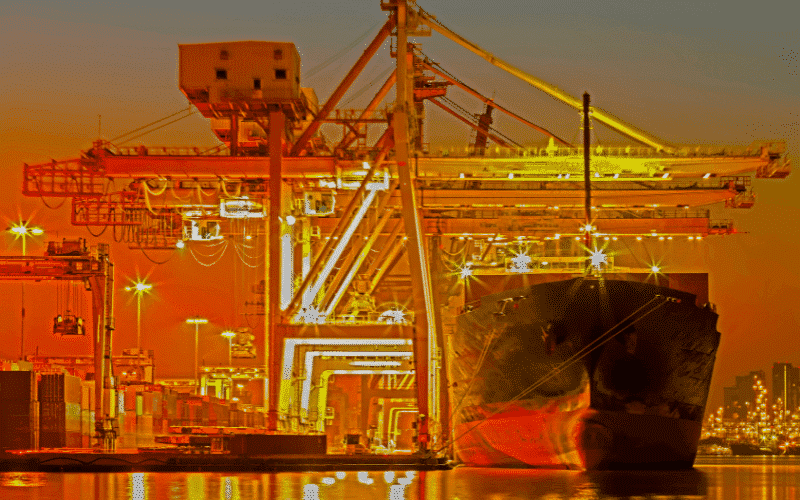

Situated on the northern coast of Honduras, the port of Puerto Castilla was initially established as a shipping place for United Fruit Company. However, presently the port is mainly used as a container terminal for the fruits produced by Dole Food Company. A naval base is also located in this small village port.
It has a cargo capacity of around 104,576 TEU, and the major export products include fruits, palm oil, and bananas. It handles 68,000 tons of cargo and around 200 container ships annually. It is equipped with one of the best port facilities in the country, along with a fully operational modern berth.
The port is close to the African Oil Palm plantations and could soon emerge as the primary port for oil export. It is well connected by roads and also the Aguan railway. The railways connect the port to the forest region, and so lumber is also shipped from this port to neighbouring countries.
There is no availability of tugs on the port, and so vessels have to utilize their own gears for loading and unloading tanks and containers. The port is quite spacious and provides huge storage space as well. There are many warehouses, 800 m long airstrip, helipads, and also a large open storage area near the naval base.
It has a ramp 50 m west of the jetty that can be used for unloading machinery. The port is well maintained, organized, free of junk, and well illuminated. It also has provisions for clean drinking water and a regular power supply.
The port doesn’t have shore cranes, but its container handling is quite organized due to a vigilant administration. Reach stackers and trailers are used for moving the containers. General cargo is dealt with at the main jetty, and its centre can be adjusted for vessel ramps.
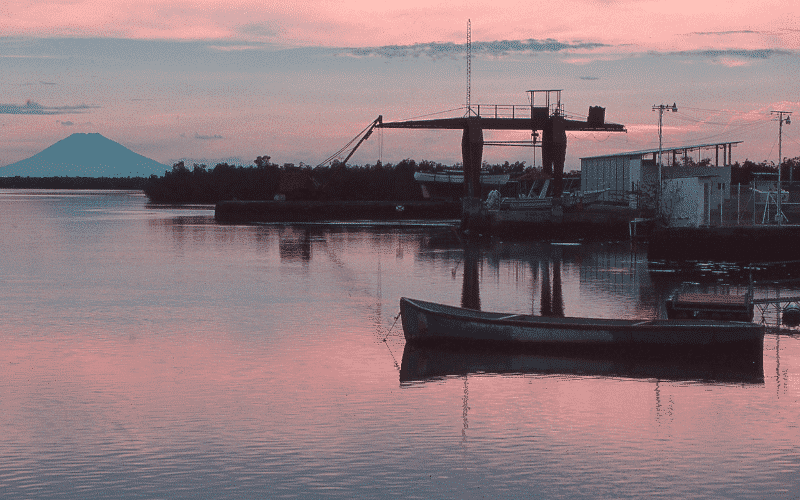

Port of San Lorenzo is the only port in Honduras that lies in the Pacific ocean waters. Also known as Puerto de Henecan, it was constructed to be used instead of the old Ampalla port. It has to be regularly dredged in order for vessels to berth in the port. It is not a very huge port and can handle only a few containers, and is accessible only through roads.
It deals with 130 thousand tons of cargo every year, and its cargo capacity is approximately 9814 TEU. The main activities at the port include handling shipping and container traffic, fuel oil, and LPG/LNG imports. It handles food and dairy products such as vegetable oil and shrimp etc., produced by local factories. It is also located near the Ampala airport enabling quick transportation of some cargo to and from the port.
It is also linked to nearby industrial cities that process pitch pine which is a major export product from Honduras.
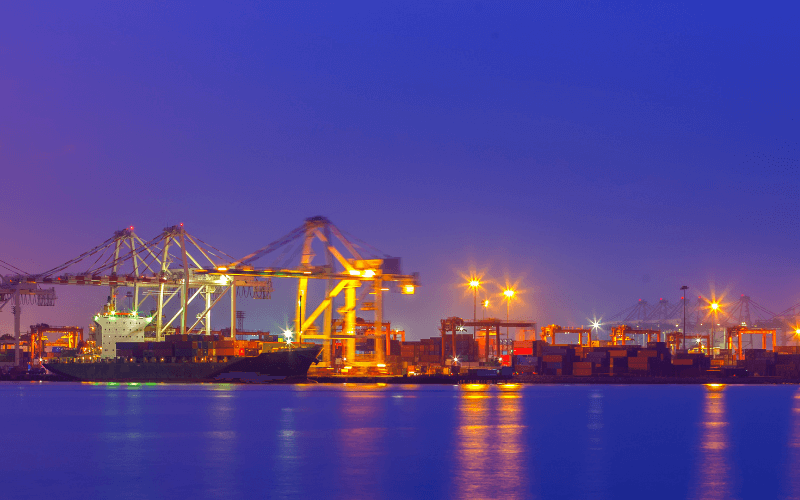

The port of Tela is situated on the northern Caribbean coast of Honduras. It gained popularity in the early 1920s when it was made the headquarters of the Tela railroad company. This enterprise was a subsidiary of the United Fruit Company. The United Fruit would process bananas from the interior of Honduras and bring them to this port for export. So, the port of Tela came to be known as the banana port in those days.
The railways are still operational and transport the bananas to the port. It is still called ‘the banana port’ as Honduras is among the world’s top 15 countries supplying the majority of banana exports.
In 2018, Honduras exported bananas worth $522.7 million from port Tela. However, apart from bananas, the port also exports coconut and other agricultural produce such as citrus fruits.
It also handles palm and vegetable oils, lumber, plywood, paper, and cement products, produced by local industries. It also exports fresh fish and frozen processed fish.
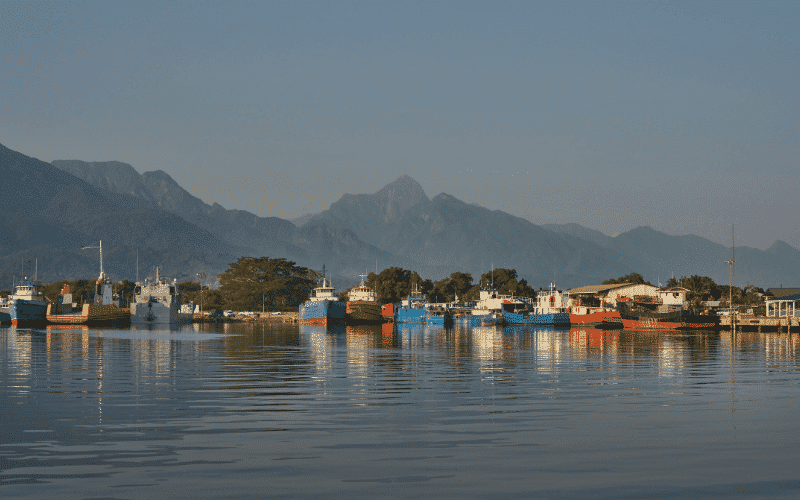

The port of La Ceiba lies on the southern edge of the Caribbean waters. It continued to develop as a modern port throughout the 19th and 20th centuries. It is primarily an agricultural seaport and the main item of export is bananas. It handles more than 79,000 tons of cargo every year and has many cruise terminals as well. It deals with dairy and horticulture produce such as fish, meat, coffee, citrus fruits, coconuts, and lumber. Since it is a small port, it can accommodate small vessels with shallow drafts.
It does not have container facilities but has a multipurpose terminal and a 600 m² warehouse.
It is located near the city of La Ceiba, which is also known as the tourism capital of Honduras. Apart from trade, this port is famous among tourists as it offers ferry services to the popular islands located nearby, such as the Islas De La Bahia, Utila, and Roatan.
The city organizes a carnival for the Spanish San Isidro Labrador every year in May. This event is attended by more than 500,000 tourists. The port is just 13 km away from the Golosan airport and is easily accessible through airways and roads.
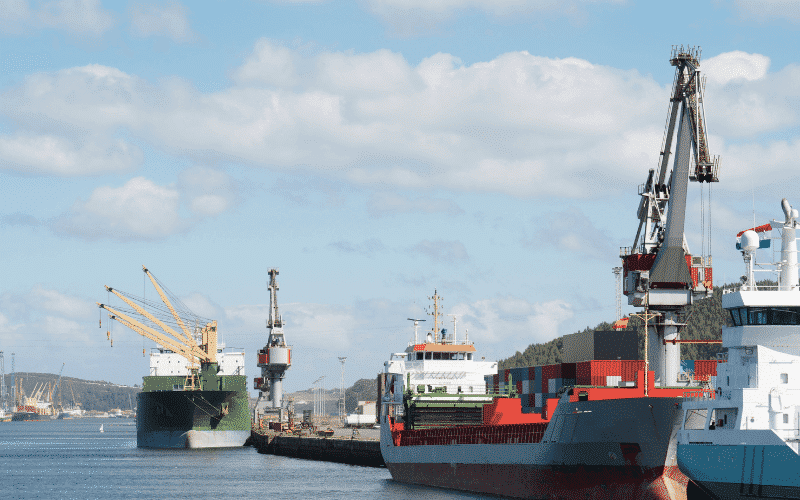

Situated at the southern shore of the Caratasca lagoon, the port of Lempira is the entry point of goods that are to be transported to the eastern part of Mosquitia. It doesn’t have much vessel traffic as the ships have to pass through a shallow passage from the open sea into the lagoon. Hence, it can handle only small ships or medium-sized fishing vessels about 50 m long with a loading capacity of approximately 150 tons.
At this port, unloading takes place at the anchorage, which is near the port’s small boat and passenger jetty. The Cargo is man-hauled into boats. However, warehouses and storage space can be rented from local traders at the port.
At Piur and Kaukira, located near the port, there is the availability of two vessels equipped with cranes that can load and unload heavy cargo. The cargo is mostly transported through the network of channels and rivers into the interiors, and also along the coastline if the weather permits. Fishing boats using outboard engines can accommodate around 1.5 tons of cargo. There is a dirt track that links Lempira to a few inland settlements and also the border of Nicaragua.
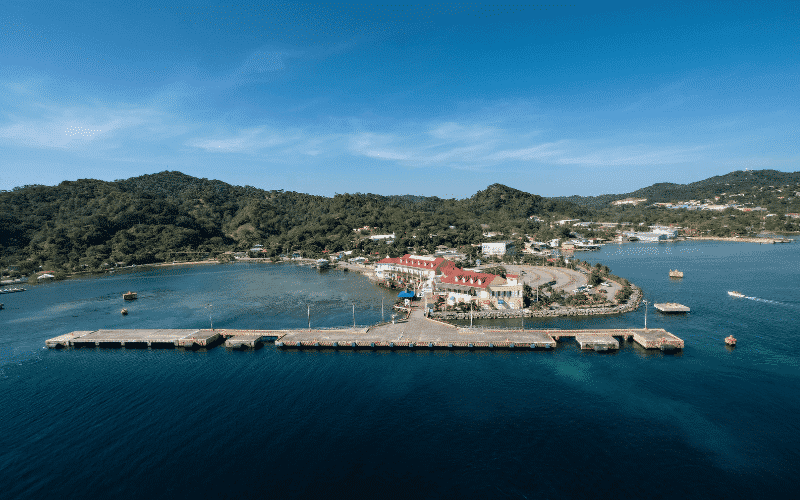

The port of Roatan is a famous tourist destination and not a trading port. It is a major port of call and spans 6.5 acres. It can handle three ships or cruises at a time and is operated by the Royal Caribbean and ITM Group. It is situated in the Town Center Of Coxen Hole, the capital of Roatan. Its water depth is approximately 12 meters.
Around 580 thousand tourists flock to Roatan every year. It has become a tourist hub mainly due to its awe-striking beauty and the various fun-filled activities it offers. The port provides duty-free shopping, attractive tours, cultural exhibitions like Garifuna Punta Dancing, hand-crafted gifts, live cigar rolling, shore excursions, and so on.
The small cruise terminal offers various services as well. The tourists can also enjoy fresh seafood with restaurants providing island-style dining in beautiful canopies.
Ports in Honduras are the major source of revenue for the country as they not only operate as trading stations but as tourist destinations as well. They also propel economic development in the country by generating employment.
Disclaimer: The authors’ views expressed in this article do not necessarily reflect the views of The Marine Learners. Data and charts, if used, in the article have been sourced from available information and have not been authenticated by any statutory authority. The author and The Marine Learners do not claim it to be accurate nor accept any responsibility for the same. The views constitute only the opinions and do not constitute any guidelines or recommendations on any course of action to be followed by the reader.










We believe that knowledge is power, and we’re committed to empowering our readers with the information and resources they need to succeed in the merchant navy industry.
Whether you’re looking for advice on career planning, news and analysis, or just want to connect with other aspiring merchant navy applicants, The Marine Learners is the place to be.